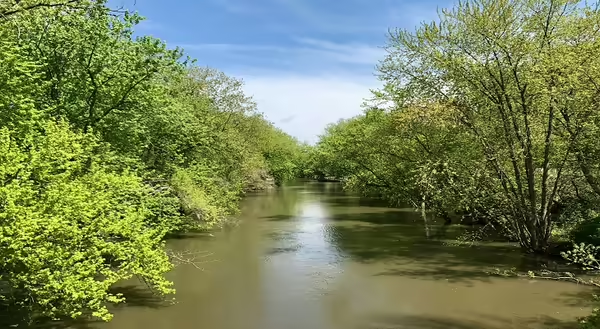
The stream water quality monitoring season may be ending, but it remains important to understand how we monitor our streams. From May 1 to the end of June, River Watch volunteers from across the state wade into planned water sites to collect data on the stream’s appearance, turbidity, velocity, and other indicators to investigate stream health. This initiative is coordinated by the National Great Rivers Research and Education Center and currently has over 200 participants annually.
There are several metrics volunteers gather to provide data on stream health. After assessing the area and conducting a habitat survey of the site, a biological survey is conducted to determine the stream’s health using numerical metrics. Macroinvertebrates are organisms without backbones and are large enough to see without a microscope. These critters can be captured in buckets of water from various parts of a stream including a snag, undercut bank, sediment, riffles, and leaf packs. The organisms are then moved to a sampling pan and counted to better understand the current habitat conditions.
It is important to look at what type of organisms are within the stream, along with how many. Macroinvertebrates can be compared on a stress tolerance scale, which measures the organism’s ability to withstand a specific amount of anthropogenic influences from 0 to 10. For example, organisms with a low tolerance require dissolved oxygen, along with chemical and physical stability. If there are a high number of invertebrates present with a low tolerance number of two or three, then the stream would be deemed healthy because those standards are met for the organisms to live in the site. Analyzing the microorganisms in their taxa classification provides valuable data. A higher index of taxa richness indicates less organic pollution and a healthier stream compared to a lower index. A healthy stream should have a mix of organisms and high biodiversity.
Common microorganisms found in a river or stream include mayflies, stoneflies, and caddisflies. Scuds, dragonfly larvae, snails, mussels, and other organisms may be seen as well. The diversity of the collected samples is a key indicator that streams are healthy, and the ecosystem is balanced. The richness of an area correlates with habitat sustainability and water quality. High diversity is often found in natural stream areas, but populations are declining due to increasing watershed disturbance. How we treat our rivers and streams impacts not only the beauty of a space but the life it holds. It is important to be mindful of any pollutants, toxic chemicals, or plastics that may be dumped into waterways. Discharging these substances into our water is harmful to macroinvertebrates, fish, and humans as it degrades a water source involved in the water cycle. Nearby construction, motorized recreation, and stormwater runoff are also contributors that can have a negative impact on watersheds and river health.
Next time you are by a stream, take a moment to greet the little macroinvertebrates that live there and remind others to help protect our streams.
If you would like to learn more about monitoring streams visit https://www.ngrrec.org/Riverwatch/.